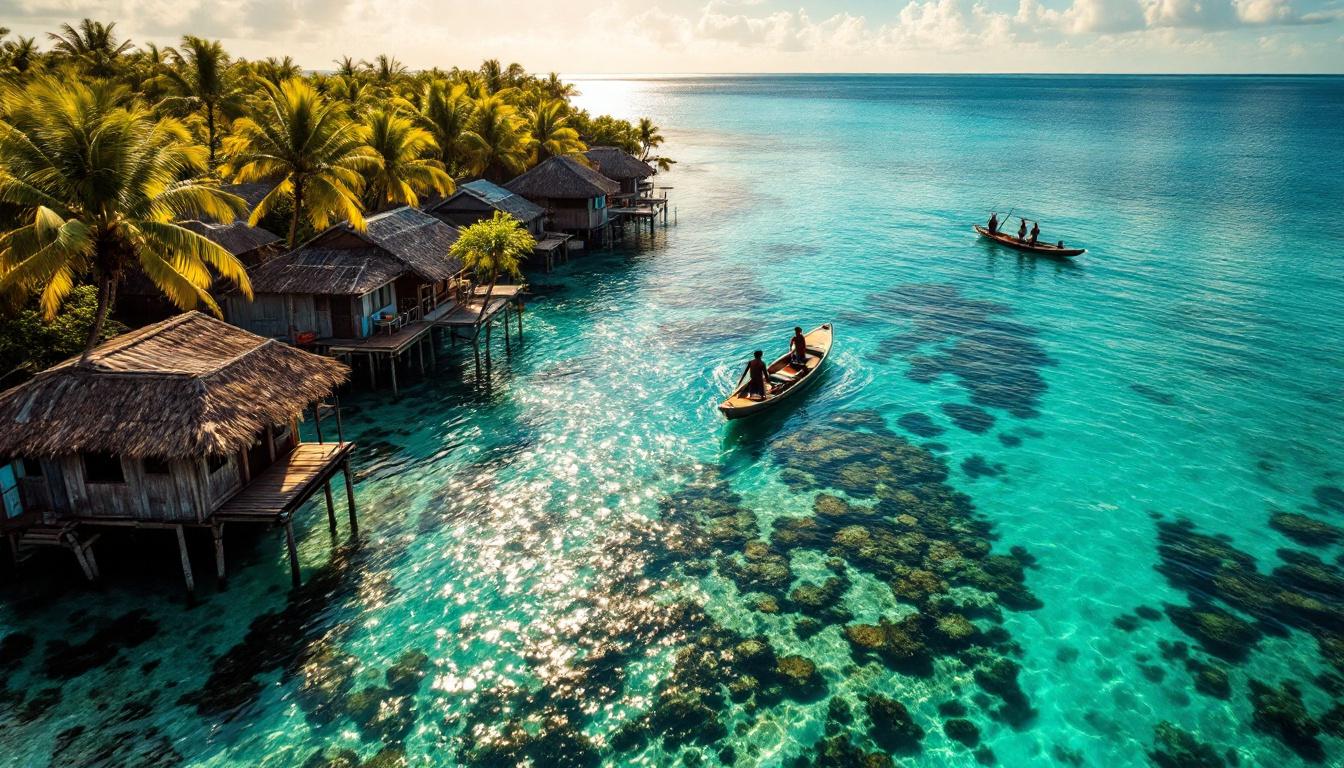Most travelers rush past Honduras toward Mexico’s beaches or Belize’s famous Blue Hole, completely missing the Caribbean’s best-kept secret. Guanaja Island measures just 50 square kilometers yet protects part of the world’s second-largest barrier reef system with the dedication of a small army.
The island’s 6,000 residents have created something remarkable: a living laboratory where pristine coral thrives under community protection. While cruise ships dump thousands onto neighboring Roatán daily, Guanaja’s ferry-only access naturally limits visitors to those truly seeking authentic Caribbean paradise.
This tiny speck in the western Caribbean proves that size doesn’t determine impact. What I discovered here challenged everything I thought I knew about island conservation and community tourism.
The scale that defies Caribbean expectations
A postage stamp protecting giants
Standing on Bonacca Cay, the main settlement measuring barely 0.15 square kilometers, you can walk its entire perimeter in twenty minutes. Yet beneath these turquoise waters lies 13,148 hectares of protected marine ecosystem recognized by the Ramsar Convention since 2021. The contrast feels surreal – this tiny community manages reef systems that dwarf entire Caribbean nations.
Population density with purpose
Six thousand people sharing such limited land creates unique intimacy. Everyone knows the reef’s health, everyone participates in its protection. Local fishing families work directly with the Coral Reef Alliance to establish marine protected areas, proving that effective conservation doesn’t require massive government programs – just committed communities.
What locals actually do to guard paradise
Traditional knowledge meets modern science
Guanaja’s fishermen practice selective harvesting techniques passed down through generations, now enhanced by scientific monitoring of coral spawning cycles. They’ve identified critical breeding areas for endangered staghorn and elkhorn corals, voluntarily restricting access during sensitive periods. This isn’t tourism theater – it’s genuine environmental stewardship.
The ferry system as natural crowd control
Limited ferry schedules from mainland Trujillo aren’t inconvenience – they’re intentional protection. Maximum daily visitor capacity stays around 200 people, compared to Roatán’s thousands. This natural bottleneck ensures the island never faces overtourism pressure that destroys other Caribbean destinations.
Diving privileges money cannot buy elsewhere
Visibility that humbles professional photographers
The Mesoamerican Barrier Reef reaches 40-meter visibility on average days, with pristine coral gardens virtually untouched by tourism damage. I’ve photographed reefs across five oceans, but Guanaja’s northwestern channels offer encounters with goliath grouper, Atlantic nurse sharks, and critically endangered sea turtles in numbers that disappeared from popular diving destinations decades ago.
Access to protected research zones
Community-managed marine areas normally closed to tourists occasionally open for certified conservation divers accompanied by local guides. These exclusive opportunities provide glimpses of reef recovery projects and coral nurseries impossible to witness elsewhere in the Caribbean.
The authentic Caribbean experience commercialization killed
Traditional island rhythms preserved
Morning starts with fishermen departing in traditional cayucos, their schedules determined by tides rather than tourist demands. No resort mega-structures dominate the horizon – instead, family-run guesthouses offer genuine cultural exchange. Meals feature fish caught that morning, prepared using recipes unchanged for generations.
Community festivals without performance pressure
Local celebrations happen for residents, not cameras. During my July visit, I witnessed spontaneous dominoes tournaments and traditional music sessions where tourists become welcomed observers rather than entertainment customers. This authentic social fabric survives because tourism volume never overwhelmed local culture.
Planning your responsible Guanaja discovery
What makes July timing perfect
July falls within Honduras’ wet season but before peak hurricane months. Fewer visitors mean better diving availability and lower accommodation costs, while warm rain showers rarely last longer than an hour. Local guides have more time for personalized reef education during this quieter period.
Supporting community conservation directly
Choose locally-owned accommodations and dive operators that contribute directly to reef monitoring programs. Your tourism dollars fund marine protected area maintenance and local conservation education rather than offshore resort profits.
Frequently asked questions about Guanaja access
How difficult is reaching Guanaja from major airports?
Fly into San Pedro Sula, then connect to La Ceiba for mainland ferry access or Roatán for inter-island boats. Total travel time from US East Coast: 8-10 hours including connections.
Do I need Spanish language skills?
Basic Spanish helps enormously for cultural connection, though many dive operators speak English. Learning reef conservation vocabulary in Spanish demonstrates respect for local environmental efforts.
What conservation activities can visitors join?
Community coral monitoring, mangrove restoration projects, and marine debris removal expeditions welcome qualified volunteers. Contact local environmental groups before arrival.
How does accommodation cost compare to other Caribbean islands?
Family guesthouses average $40-80 nightly, while eco-lodges with diving packages range $120-200. Significantly lower than Roatán’s resort rates while providing more authentic experiences.
This tiny Honduran island proves that the Caribbean’s most precious experiences aren’t found where cruise ships dock. Guanaja’s 6,000 guardians have created something increasingly rare: a destination where tourism enhances rather than threatens natural and cultural authenticity.
